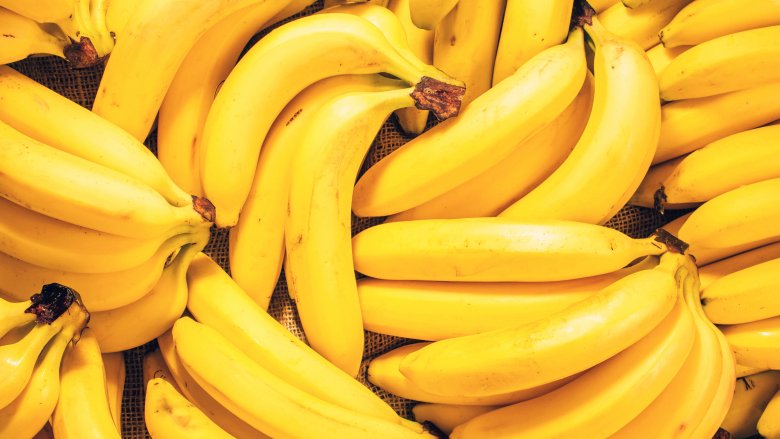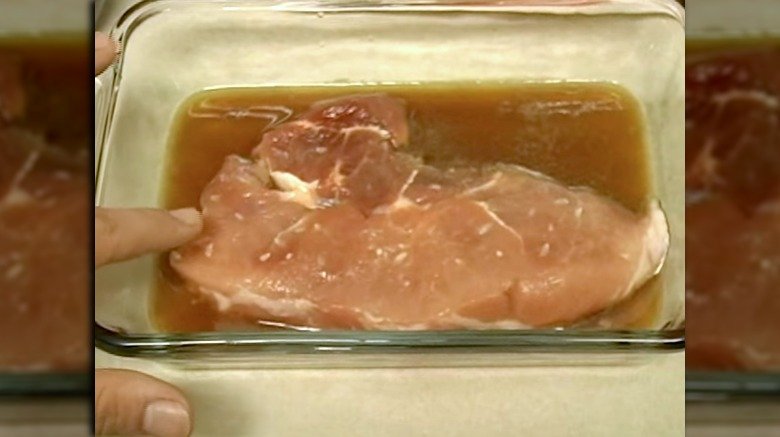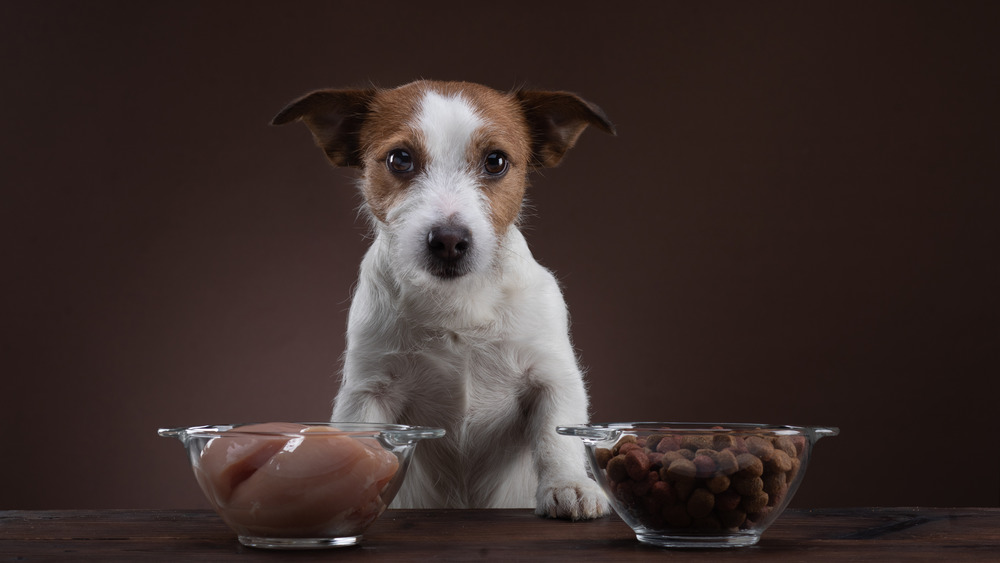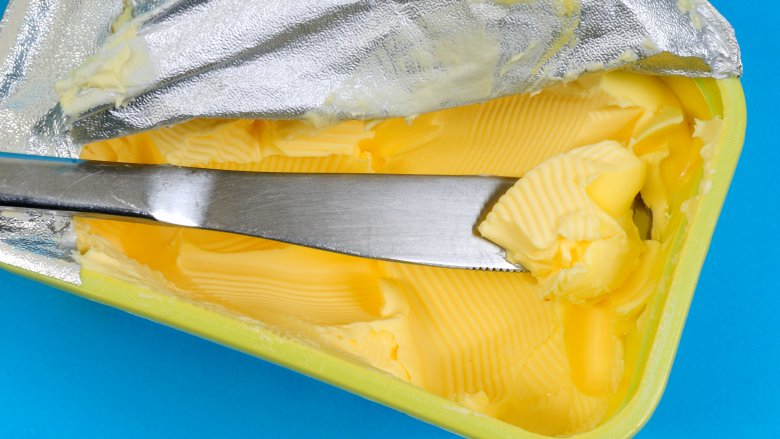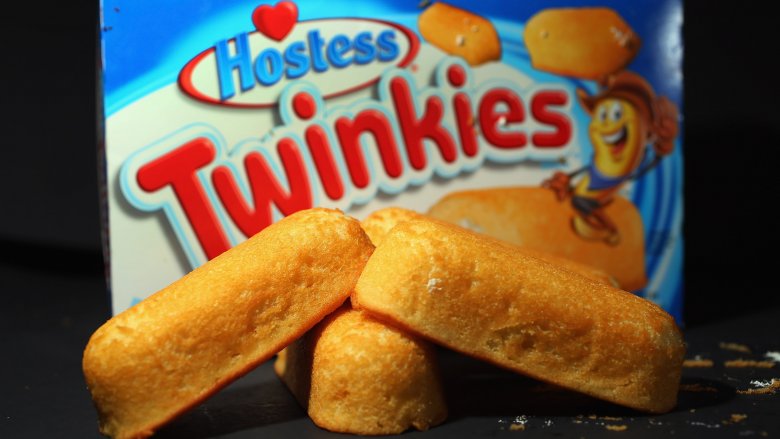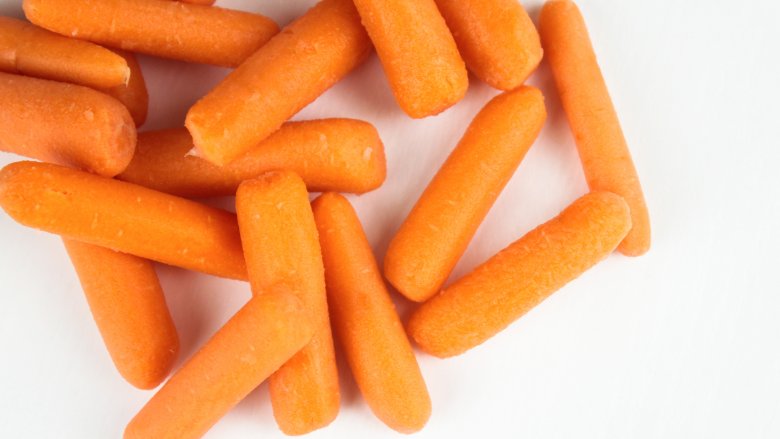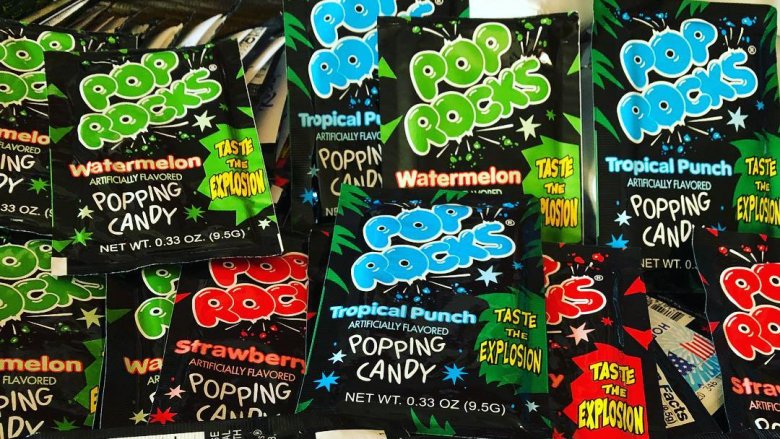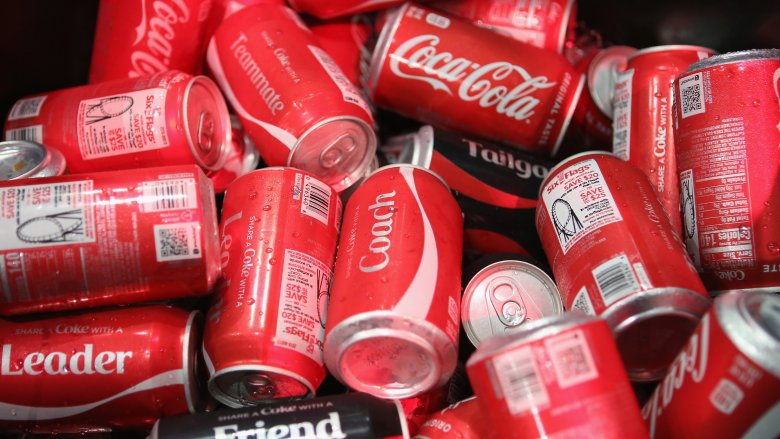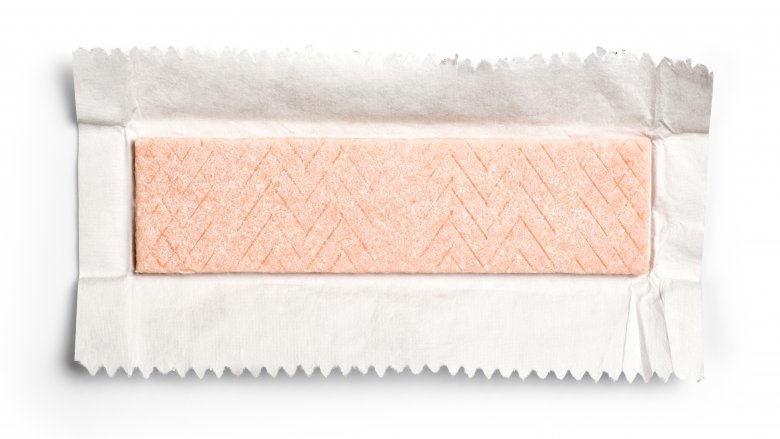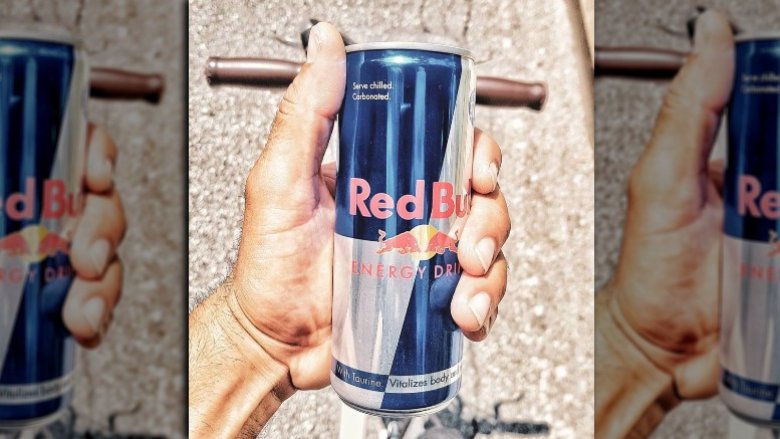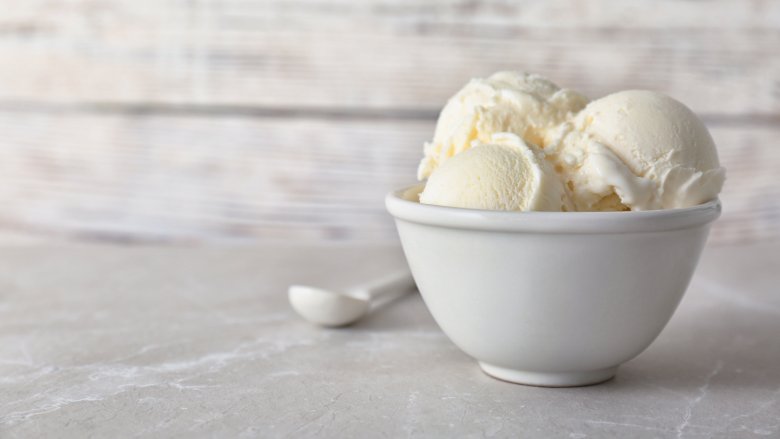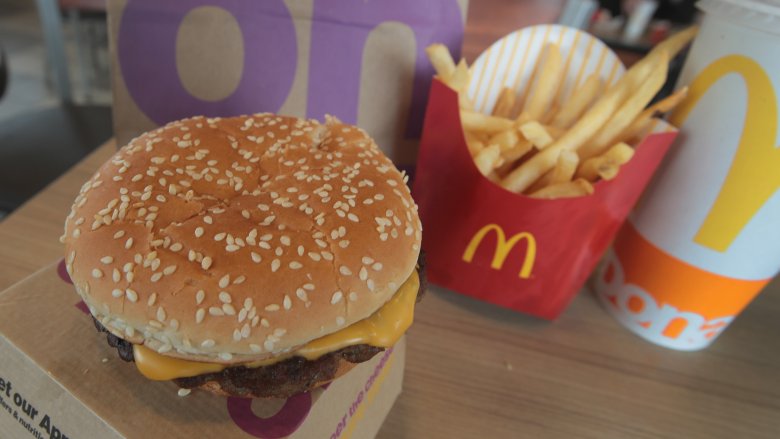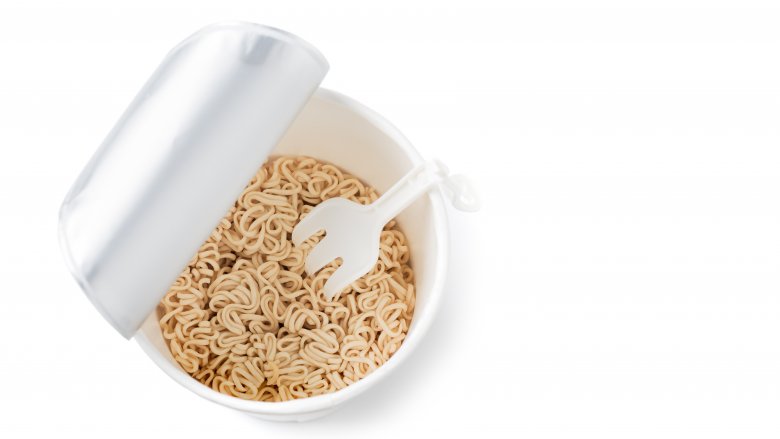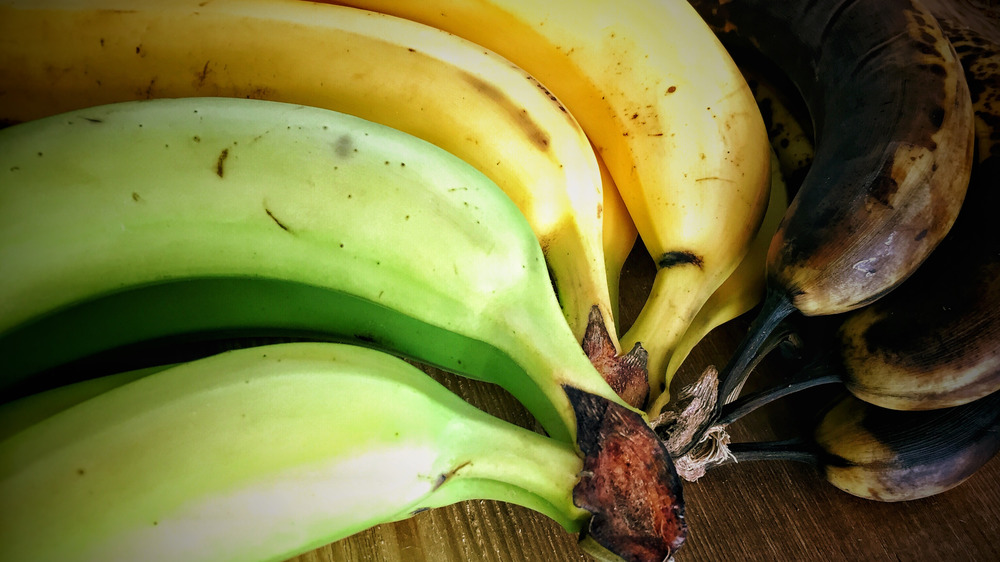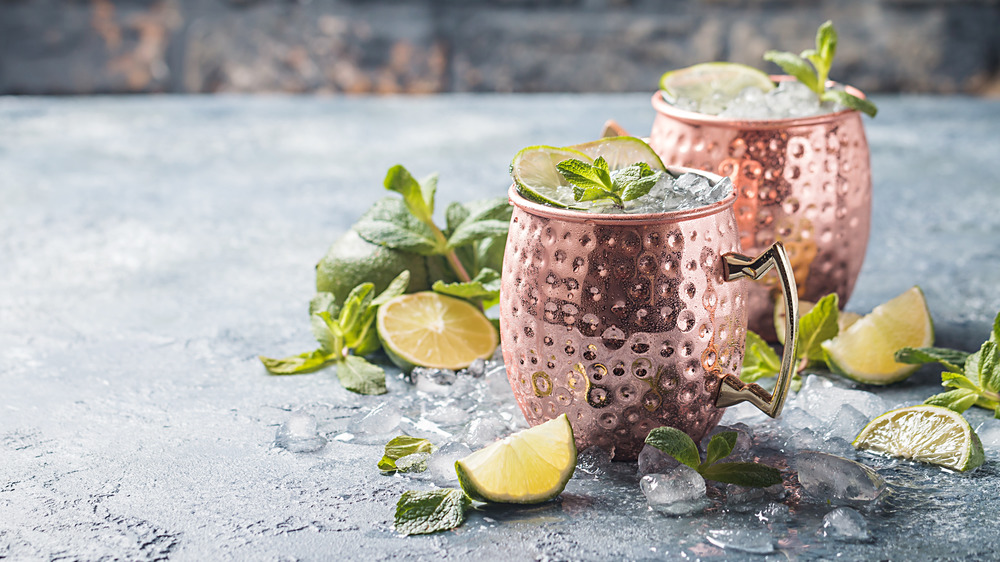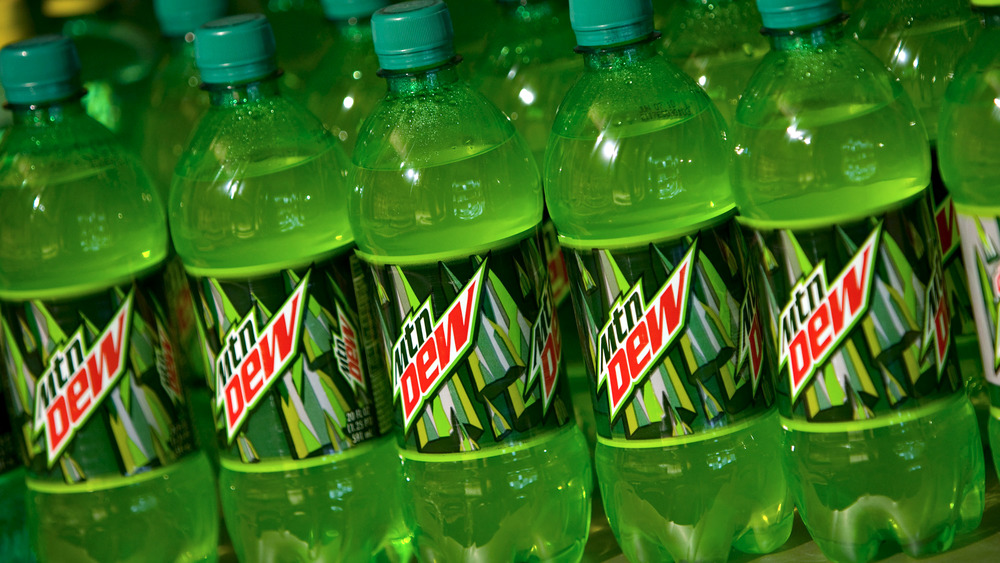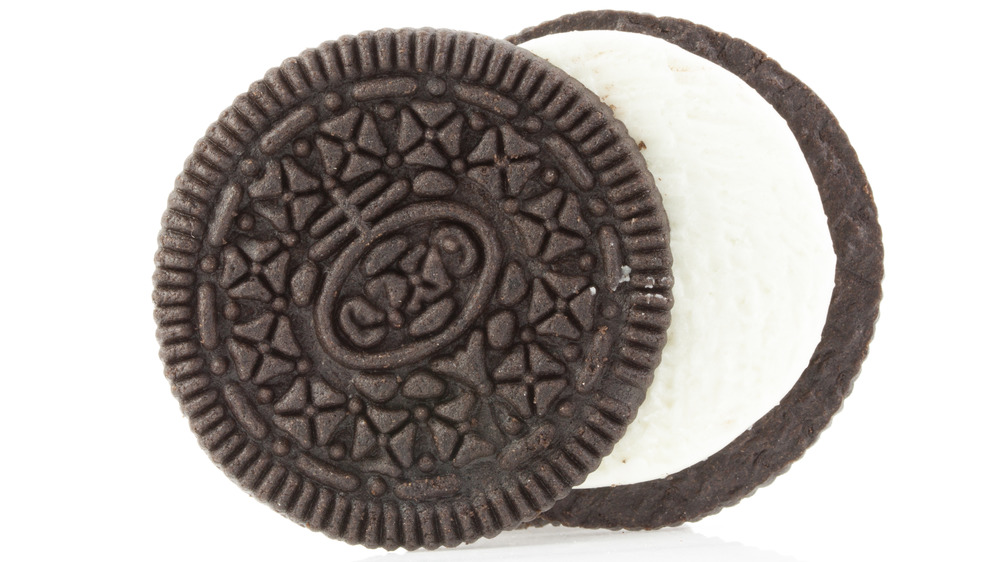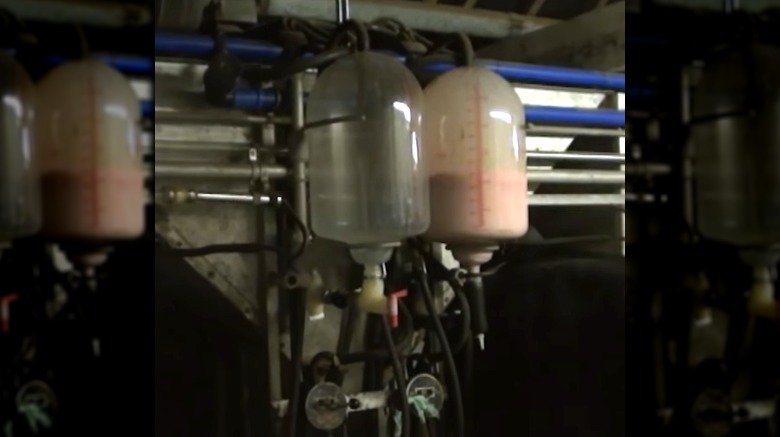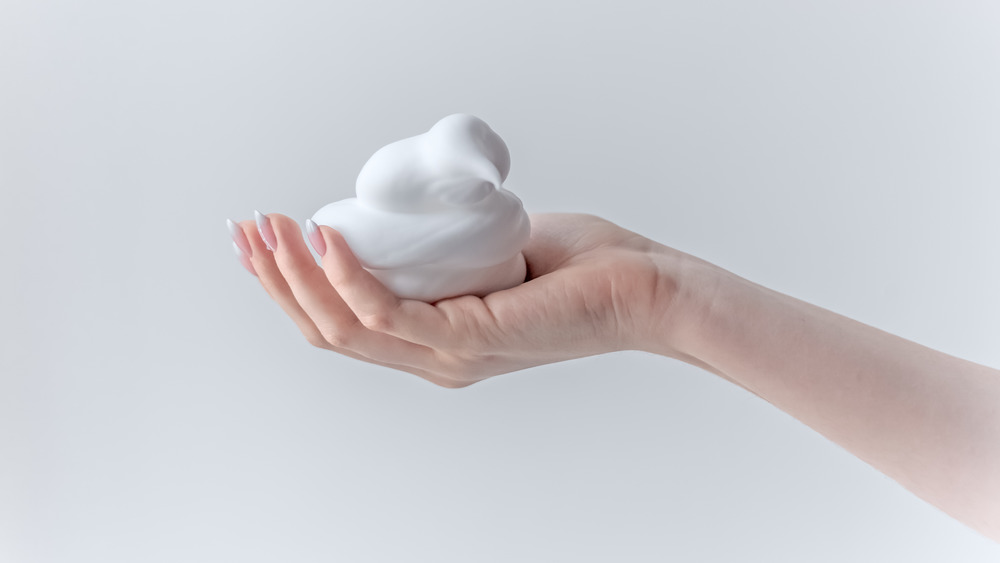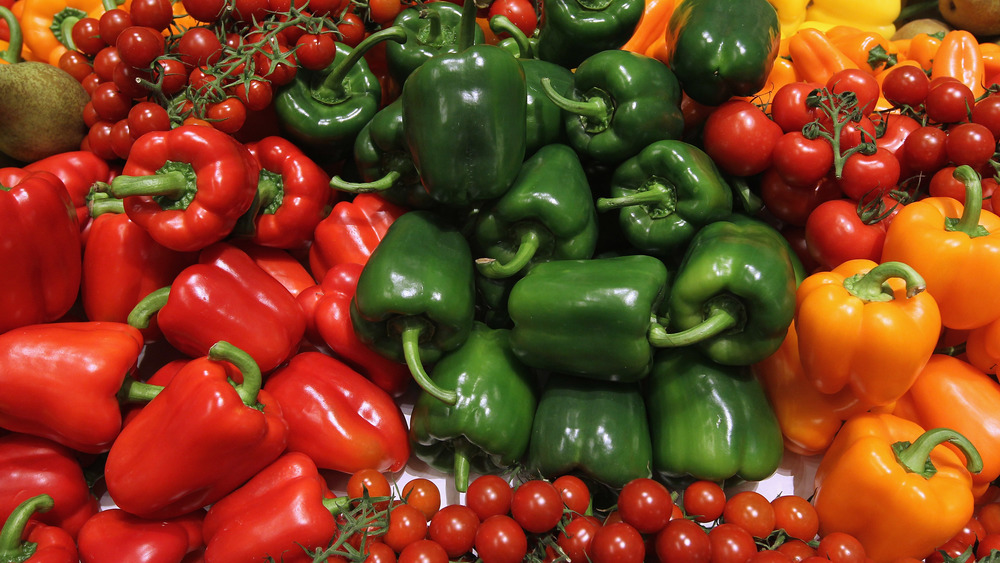The Craziest Food Myths, Debunked
Thanks to the internet and its ability to spread information far and wide in a matter of minutes, our social media feeds and inboxes are chock full of dubious claims, and nothing seems to spread faster than horror stories about our favorite food and drinks. As unbelievable as these stories may seem, they gain steam as they get thousands of outraged "likes" and retweets, and since fact checking seems to have fallen out of favor these days, these urban legends live on.
Take Coca-Cola, for instance. If we're to believe what we read on the internet, drinking the popular soda is practically a death sentence. If it can dissolve pennies and meat overnight, what's it doing to your body? And did you know that it magically coaxes worms out of pork? Bananas are probably off the table too, since eating six at once will kill you. Or will it? Let's get to the bottom of the craziest food myths floating around on the web.
Too many bananas will kill you
The myth: Six bananas contain a lethal dose of potassium — eat that many at once and risk death.
The reality: We can't imagine why anyone would really want to, but should the overwhelming desire to scarf down six bananas at once hit, it's perfectly safe to do so. According to Mayo Clinic, hyperkalemia, the medical term for high potassium levels in the blood, is dangerous and usually requires treatment. And it is true that one of the causes is "excessive use of potassium supplements." But overdosing on bananas? Not going to send you to the hospital. BBC reports that you could safely eat around seven-and-a-half bananas in one day and still be under the recommended daily allowance of potassium, which they say is 3,500 milligrams per day for adults. In fact, Catherine Collins, a dietitian at St George's Hospital in London, told them the average person would need to eat about 400 bananas a day to put you in serious danger. Unless you've been practicing for your debut into the world of competitive eating, that's probably never going to happen.
Coke makes worms come out of raw pork
The myth: Give your raw pork a Coca-Cola bath and wait for the worms to come out.
The reality: The reasoning behind this is actually a combination of two myths. First, the worms-in-pork myth: Once upon a time there was a real concern that we would all get sick from eating undercooked pork that was infected with a parasite — the larvae of the Trichinella worm. But these days, according to the CDC, trichinellosis is no longer such a threat due to legislation prohibiting the feeding of raw-meat garbage to hogs. In other words, there should be no worms or worm larvae in our pork.
The next part — that Coca-Cola will compel these non-existent worms out of the meat — seems to stem from the "Coke will dissolve your insides" myth (more on that later). The idea being that the soda is so incredibly caustic that even the worms can't take it and must escape their Coke-ridden homes. But here's the real kicker: Even if your pork was infected with the larvae, it's microscopic and you'd never know if a mass exodus was happening.
Meat-free alternatives... or dog food?
The myth: Meat-free burgers are essentially the same as dog food.
The reality: In 2019, The Seattle Times reported that cattle ranchers — worried that the increasing popularity of meat-free options was going to cut into their livelihood — were taking aim at companies like Beyond Meat and Impossible Foods with lawsuits that prohibited the plant-based food companies from using certain terms. Ars Technica added that meat producers were also running a slew of print ads and op-eds claiming plant-based burgers were processed in much the same way dog food is, and when Real Agriculture spoke with University of California-Davis professor Dr. Frank Mitloehner, the academic claimed that in his experience, people couldn't look at an ingredient list and tell the difference between plant-based burgers and dog food, which made them basically the same thing.
So, what's the truth?
Snopes took a closer look, and found that while yes, there were many ingredients that plant-based burgers and dog food had in common, the majority were added vitamins and minerals. Furthermore, both used peas for protein. And that...was it, really. Snopes researchers came to the conclusion that no, plant-based burgers are not indistinguishable from dog food, and they also added that the same sort of comparison can be made across a shockingly wide range of foods.
Margarine is practically plastic
The myth: One alarmist website asks, "Would you melt your Tupperware and spread that on your toast?" Because, apparently, margarine is actually just one molecule away from being plastic.
The reality: Even if margarine was almost plastic, no one can deny that it tastes a lot better than melted Tupperware. But it's not. Adding one molecule, or ten for that matter, will never turn margarine into plastic. Their chemical structures are simply not the same. Dietitian Caryn Zinn explained in layman's terms to Healthy Food Guide, "When we examine the chemical structures in both materials, it is easy to see why someone would suggest this; margarine has a similar chemical backbone structure to plastic. However, the same could be said about butter, or any fatty acid present in the human body. Many varied substances share similar chemical properties, but the slightest variation in molecular structure can make a world of difference."
Twinkies never expire
The myth: Twinkies will be our saving grace when the zombie apocalypse hits because they never ever expire.
The reality: Sorry, doomsday preppers — you're going to have to find something else to stock your underground bunker with, because those Twinkies aren't going to be very delicious after about 45 days. How could that be, when the ingredient list looks like an endless array of hard-to-pronounce chemicals? Steve Ettlinger, author of processed food bible Twinkie, Deconstructed, told NPR's The Salt that you might be surprised to learn that among that lengthy list, only one ingredient is actually a proper preservative — sorbic acid, which prevents the formation of mold. Otherwise, although no one can argue that a whole lot of food science goes into the making of a Twinkie, there is real flour, sugar, and even a small amount of egg in those spongy yellow cakes, and all those things do indeed spoil.
Baby carrots are made from deformed carrots soaked in chlorine
The myth: Those cute baby carrots are actually made from larger deformed carrots that are soaked in chlorine because they no longer have the protection of their own skin, and the white film that appears on the surface is that chlorine leaching out.
The reality: There is a bit of truth to this myth that has been circulating for years as a terrifying email "warning," but it's not nearly as alarming as it sounds. Decades ago, farmers did make baby carrots from broken and misshapen carrots that would otherwise have been a loss, but there was nothing wrong with these so-called "deformed" root vegetables. Today, baby carrots are made from long, skinny carrots that have been specifically bred to be sweeter, brighter, and coreless.
What about the chlorine soak? That's taking things a bit too far. Yes, the baby carrots are given a chlorine rinse, but it's to guard against food borne illnesses like E.coli. This is a common practice with pre-cut foods, and —brace yourself — your tap water has comparable levels of chlorine. As for the white film? It has nothing to do with the chlorine rinse — it's simply dehydration setting in on the cut surface.
Night-vision carrots
The myth: Carrots will help you see in the dark, and can even give you night-vision.
The reality: At a glance, it seems like this one has a good chance of being true. Carrots, after all, are high in beta carotene, which is a nutrient everyone needs if they're going to keep their eyes healthy. According to Science Focus, a lack of beta carotene — or vitamin A — can result in a decrease in the levels of a pigment in your eyes that does, in fact, help you see in the dark.
But here's the thing: eating carrots will only help if you have this deficiency already, and they'll only help restore your night vision to normal levels — not, as the myth says, allow you to see in complete darkness. And the origins of this myth? Well, the Smithsonian says that the actual source was a little World War II subterfuge.
The British Royal Air Force was using a top-secret new technology to help defend against — and attack — the enemy. We know today that it was radar, but in order to keep that secret, the Ministry of Information spread the rumor that pilots ate a ton of carrots, and therefore, were just really good at seeing in the dark. It's not clear whether or not the German military ever bought the argument, but it soon spread to the British public. Everyone started saying that carrots would help soldiers see during routine government blackouts, and the idea just never left popular mythology.
Combining Pop Rocks with soda means certain death
The myth: Remember Mikey from the Life cereal commercials? Well, poor Mikey basically exploded after eating Pop Rocks and washing them down with soda. RIP, Mikey.
The reality: First things first — Even if he did combine Pop Rocks and soda, Mikey is still very much alive, and according to Snopes, we can't even be sure that it actually happened. Nevertheless, the rumor persists, and is often cited as the reason the candy was pulled off the market at one point, which is also not true — it was just marketed under a different name.
So can Pop Rocks really kill you? Food Republic answered the question: "Yeah, but you'd have to mix them with heroin and inject too much." That's a no then? The secret ingredient in the fizzy candy is pressurized carbon dioxide, and while that might sound scary, the amount in Pop Rocks is only one-tenth that of any typical soft drink. In other words, you might get a decent burp out of it, but you're certainly not going to explode.
Coke dissolves all the things
The myth: Place a penny, a nail, a steak, a tooth — basically any object — in a of glass of Coca-Cola for a certain amount of time and said object will have dissolved. Basically, it will rot the teeth out of your head and melt your insides.
The reality: Yes, Coke does contain acids — phosphoric, citric, and carbonic, to be exact. And yes, acid can dissolve things. But Coke cannot dissolve any of these things overnight. Here's why: Even if these myth-affirming stories of a tooth dissolving in soda within 24 hours were true (and they're not), they don't take into consideration that we don't hold the liquid in our mouths for longer than a few seconds. Even if Coke did have the ability the dissolve our teeth, we simply don't give it the time to do so. Another point to consider is that the amount of acid in Coke is actually less than orange juice, and nobody is wagging a finger at your favorite breakfast drink. As for melting your innards? Nope, not going to happen either. The gastric acid in our stomachs is pretty similar to — and sometimes stronger than — anything Coke brings to the table.
Chewing gum takes seven years to digest
The myth: Swallow your chewing gum and it'll take seven longs years to make its way through your digestive system — it is indigestible, after all.
The reality: It's true that gum does contain a substance that's indigestible — a rubbery substance called gum base made up of resins, waxes, and other not-food ingredients. And it's also true that your body doesn't break that particular substance down. But that doesn't translate to gum being any harder to digest than any other food, and it's stickiness poses no problem when it comes to getting through your digestive system. In fact, gum will ride right along with anything else you've swallowed, and make its exit in the same timely manner as your dinner — no seven year wait time required. However, because of those resins and waxes, it's probably going to look a lot like it did when you swallowed it, if you catch our drift.
The secret ingredient in Red Bull is bull semen
The myth: Red Bull might give you energy, but it also gives you a dose of bull semen.
The reality: This one is really a case of people's imaginations running wild. Yes, Red Bull does contain taurine, a naturally occurring amino acid. And yes, bulls produce taurine, but so do humans and other animals — in fact, the human body contains 70 times more of this supposed unsavory ingredient than a can of Red Bull.
So how did we get to bull semen? Because of the Latin meanings of the word "taur" (bull) and its suffix "ine" (something derived from), it was concluded that taurine must be a substance derived from bull testicles. It's the only logical conclusion, right? Wrong. Do we really think bull semen is the secret ingredient in our energy drinks? The logical conclusion, which also happens to be the truth, is spelled out on the company's website. The taurine used in Red Bull is a "purely synthetic substance produced by pharmaceutical companies and is not derived from animals or animal materials." Now that makes a bit more sense, doesn't it?
C'mon, kid, you can't have coffee!
The myth: Coffee can stunt your growth.
The reality: It turns out that there's a few layers of misconceptions to this oft-repeated idea that drinking too much coffee will stunt a person's growth. According to the Harvard Medical School, the effects coffee has on the body have been studied extensively — and there's not a shred of evidence that confirms this idea about impacting growth. They suggest that the rumor grew out of yet another rumor: that coffee causes osteoporosis. (It doesn't.) This condition can be associated with a loss of height... but not only is that not a regular symptom, but — again — coffee has nothing to do with it!
The Harvard Medical School also adds that it also doesn't make sense for the simple reason that most people have gotten as tall as they're going to get well before coffee becomes a regular habit, and there's no evidence of a drink or foodstuff that can "'undo' bone growth once it's complete."
There are beaver butt secretions in vanilla ice cream
The myth: Your favorite tub of vanilla ice cream gets its flavor from the secretions of a beaver's anal gland. Mmm.
The reality: We can thank Jamie Oliver for this one. During an appearance on the Late Show with David Letterman, he informed the audience of this disturbing vanilla ice cream "fact," and the rumor has persisted since. But don't go dumping your ice cream in the trash just yet.
Castoreum, the so-called anal gland secretions, actually comes from the castor sac, located next to the anal glands. Turns out, it actually smells good, with notes of honey, anise, and raspberry. And yes, it is an FDA-approved flavoring. So what's the problem? Castoreum is expensive. "In the flavor industry, you need tons and tons of material to work with," flavor chemist Gary Reineccius told NPR's The Salt. "It's not like you can grow fields of beavers to harvest. There aren't very many of them. So it ends up being a very expensive product — and not very popular with food companies." Bottom line? Your vanilla ice cream probably doesn't contain beaver butt secretions, or anything else from a beaver for that matter.
McDonald's burgers can't rot
The myth: McDonald's hamburgers are so full of chemicals and preservatives that they can't rot, and look perfectly pristine more than a decade after purchase.
The reality: Sorry fast food haters — under the right conditions, a McDonald's burger will rot just like any other food.
McDonald's turned to a food science expert for an explanation, and simply put, these hamburgers are dehydrated. Dr. Keith Warriner explained that the microbes that cause rot need warmth, water, nutrients, and time to grow. If you take any of these away, in this case water and warmth, the microbes can't grow. Because a McDonald's hamburgers is — let's face it — pretty dry after the cooking process, it's not surprising that it would continue to dehydrate if left out in a cool, dry place. And this phenomenon doesn't just apply to McDonald's fare, either. In an experiment comparing a homemade burger to a McDonald's burger, Serious Eats found that neither specimen showed signs of decomposition. However, when put in a plastic bag, both burgers rotted quite nicely. So, if you really want your Happy Meal to grow some mold, seal it up in a bag and put it in the sun.
Instant noodles are coated in cancer-causing wax
The myth: Your go-to budget noodles are coated in wax to prevent them from sticking together, and the microwavable container they reside in is also coated in wax. That wax is basically killing you with each bite as it builds up in your system and causes cancer.
The reality: Even if instant noodles did have a wax coating, it wouldn't necessarily be cause for concern. How do you think all that shiny grocery store produce achieves its gleam? You got it — edible wax, and yes, according to the FDA it's safe for human consumption.
But do instant noodles even have that alleged wax coating? Nope. Cup Noodles maker Nissin says that their instant noodles do not contain any wax. "Noodle strands do not stick together as a natural consequence of the process of slitting or cutting the noodle dough into strands, steaming, and then frying in normal cooking oil." As for the microwavable containers, those are lined with food grade polyethylene material that prevents liquid from soaking through, and does not melt with heat. At the end of the day, a daily Top Ramen habit might not be the best for your health, but it's not because of wax, and it definitely doesn't cause cancer.
Does the color of your banana say a lot?
The myth: You can tell when a banana's been "chemically ripened" by the color: a green stalk and brown spots means your banana was ripened using chemicals.
The reality: No, says a fact check from Australian Associated Press, the different colors of a banana absolutely don't reflect how it was ripened. In 2019, a viral Facebook image claimed that while bananas with a black stalk were "naturally ripened," (and therefore better for you, the theory went) a green stalk meant you were getting something a little more artificial.
A little investigation proved that not only is that not true, but the idea of chemical ripening isn't as scary as it sounds. It's also incredibly common: National Geographic says that in order to get bananas from where they're grown to grocery store shelves around the world, they're picked while they're green, and then ripened on their way along the supply chain. Most of the time, it involved a high-tech process, massive, temperature-controlled rooms, and exposing the bananas to ethylene gas in order to get them to ripen.
Mashed went one step farther, as wanted to know what ethylene gas is. Basically, it's a gas that's released naturally from some fruits — like apples — as they ripen, and it causes other fruits and veggie stored together to ripen, too. Manufacturers are just speeding up the process by exposing bananas to the gas, and it's likely we wouldn't have access to bananas without it.
California wines contain a deadly compound?
The myth: California wines contain dangerously high levels of arsenic.
The reality: When you hear "arsenic," there's likely one thought that comes to mind: deadly. There's a good reason for that, considering arsenic has been used by poisoners to kill for centuries. So, when Wine Spectator reported that lawyers were pushing a class action suit against California wineries because of the presence of arsenic in wines, it's understandable that people got a bit worried.
But they also say that the lawyers involved are pretty much the only ones that have a real stake here. Even as experts from the University of California at Davis were quick to publish research stating the "evidence" was massively flawed, other groups — like the environmental risk consultants Cardno ChemRisk — agreed that while there was arsenic present in wines, the chemical was in quantities well below what was allowed by law, as well as being well below what would actually make a person sick.
Not evidence enough? Dartmouth also points out that arsenic is absorbed from soil by a wide variety of foods, like apples and pears, and finding it in what we regularly eat isn't that unusual. Ultimately, the lawsuit against the wineries was dismissed.
Do you have super dangerous mugs in your drinks' cabinet?
The myth: Moscow mules — and those copper mugs — are poisoning you.
The reality: In 2017, people all over were undoubtedly throwing away one of the coolest sets of drinkware they might have: the copper mugs popularly used with the cocktail the Moscow mule. News outlets like Men's Health were repeating a warning from the Iowa Alcoholic Beverages Division that the pH of a Moscow mule was below 6, which basically meant that it was going to cause copper to leech into your drink from the mug — and drinking copper isn't a good thing. Warnings from the U.S. Food & Drug Administration (FDA) were often cited along with the warning, and they're quite legit, right?
It turns out that there's much more to the story: Attorney and food poisoning expert Bill Marler told Business Insider that basically, in order to ingest a dangerous amount of copper, "You'd have to drink from a copper cup every meal of every day for 25 years."
That's because copper poisoning is all about exposure, and by the time you drank enough Moscow mules to be exposed to a dangerous amount of copper, well, to put it bluntly: You'd probably have so many alcohol-related health problems that copper would be the least of your worries.
Will your Mountain Dew habit ruin your chances of starting a family?
The myth: Mountain Dew will cause infertility in men.
The reality: No, drinking a Mountain Dew a day isn't going to cause infertility.
According to Healthline, Mountain Dew got a reputation as causing infertility problems because of two specific ingredients: yellow dye 5, and caffeine. And when it comes to actual, scientific research, there's no definitive proof that either of those things will impact fertility in men at all — especially in the quantities you'll find in Mountain Dew.
There's a few footnotes to this one: The first is that scientists do warn that there are other things that will impact an ability to conceive, like drug and alcohol use, obesity, and smoking. And as for Mountain Dew, it's also not totally in the clear when it comes to health concerns. There actually are some conditions linked to over-consumption of the soda, including diarrhea and gastrointestinal distress, obesity, insomnia, a fast heartbeat, and an increased risk of developing diabetes. So, while Mountain Dew is not going to cause infertility, there are still reasons to go easy on the stuff.
Are there secret messages on your favorite cookies?
The myth: Oreos were designed with secret symbols linked to religion, the occult, and secret societies like the Knights Templar.
The reality: The next time you crack open a pack of Oreos, take a minute and look at the design. Seems harmless enough, right? Well, there's a pretty epic myth that says the symbolism interwoven into the design is a shout-out to the Knights Templar, and that it also references the occult. Business Insider says that among the "questionable" symbols is the cross above the logo, which is thought to be the top of the Cross of Lorraine, a symbol of the Knights Templar. They're also linked to the geometric pattern circling the cookie, only... they're really not.
Mental Floss found that the cookie's design came about in 1952, when a Nabisco employee named William Turnier was asked to give it a makeover. According to his son, Bill Turnier, the design was actually inspired by medieval monks who autographed their manuscripts in fancy script. Nabisco loved the idea, as they believed it was a sign of quality and craftsmanship — and so, Turnier's design became the new face of Oreo cookies.
The younger Turnier still has the copy of his father's original design, so... was there any subliminal messages? He said to Mental Floss: "He just liked the look of the flowers. He could never understand when people would locate him, demanding some kind of explanation."
And there you have it!
Chocolate milk is actually bloody milk
The myth: Think cocoa is what makes chocolate milk brown? Think again — it's actually cow's blood.
The reality: Chocolate milk is apparently quite the perplexing substance. A 2017 survey revealed that an astounding seven percent of more than 1,000 actual real-life adults think chocolate milk comes exclusively from brown cows, and no, we're not kidding. Perhaps it's this seven percent that also believe the secret ingredient in chocolate milk is cow's blood?
This myth seems to stem from a social media post purporting to show what cow's milk looks like before it's "whitened." The image — a container of red-tinted milk — is real, but it's not the "real color of cow's milk," as the caption alleges. It's actually milk from a cow that had recently given birth, and the original video that the still was taken from explains that it can happen from "a blood vessel burst in the udder" and that the milk "is not fit for human consumption." A well-know dairy farmer and dairy educator, known as Dairy Carrie, even weighed in on the debate. She reiterated that while bloody milk does happen (though rarely), any bloody milk would be dumped. One more time for the people in the back: Cocoa beans are what makes chocolate milk brown. The end.
Is this the best home remedy for lice?
The myth: Mayo kills lice by suffocating them all.
The reality: According to Healthline, the practice of using mayo to treat that dreaded scalp infestation is "a fad lice treatment." They also add that there's not really any proof that it actually works, in spite of the fact that there was a whole episode of The Office dedicated to getting rid of lice by pairing off and smearing mayo all over everyone's heads.
The idea is that the mayo is so thick that it suffocates the bugs, but it doesn't work for a few reasons. For starters, mayo has little to no effect on the nits — the baby lice — which will inevitably hatch and return to re-infest the scalp, Healthline reports.
There's also some yucky side effects that perhaps unsurprisingly come from smearing your scalp with mayo, and that includes suffering from oily breakouts. There's also the smell that can linger if not all the mayo is washed out, and in some cases, people with egg allergies have suffered from allergic reactions after trying this home remedy. Bottom line? There are other lice treatments that work better... and won't leave you smelling like rotten eggs.
Bell pepper gender reveal parties
The myth: Looking at the "gender" of a bell pepper will tell you how it's going to taste.
The reality: It's demonstrable that bell peppers have different numbers of lobes, and it's oft-repeated that "boy" peppers have 3, and "girl" peppers have 4. From there, the theory says "girl" peppers have more seeds and a sweeter taste, and they're better raw — while the "boys" are better after they're cooked. But according to Oregon State University, that's just not true.
All bell peppers have seeds, and those seeds can produce new plants — so it's not really a matter of "male" and "female." Ohio State University goes one step farther and points out that all pepper plants have flowers that contain both "male" and "female" parts, which are what make the peppers in the first place.
So, what about these bumps? How many bumps each pepper has varies based on things like the conditions they're grown in and what kind of pepper it is. And as for sweetness, that's impacted more by ripeness. The more ripe the pepper, the sweeter it is — which means the green are the least sweet, and then, as a pepper turns yellow, orange, and finally, red, it gets sweeter.

